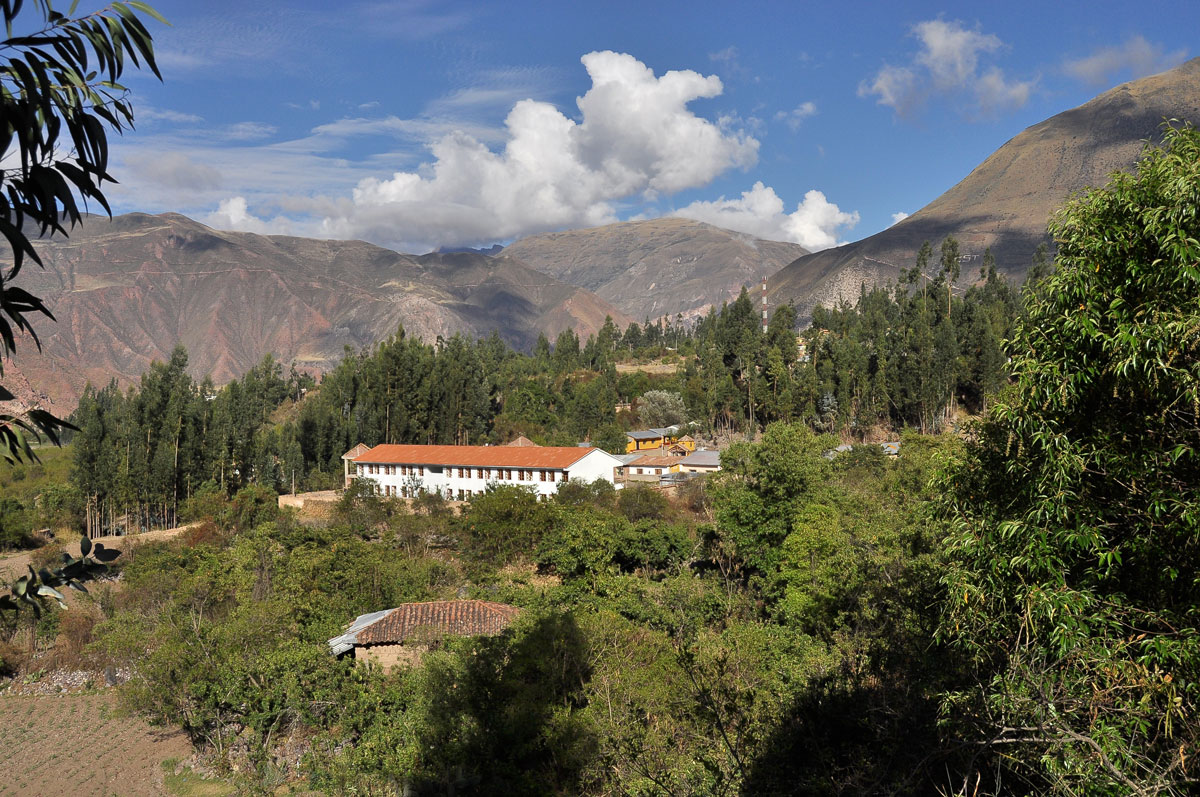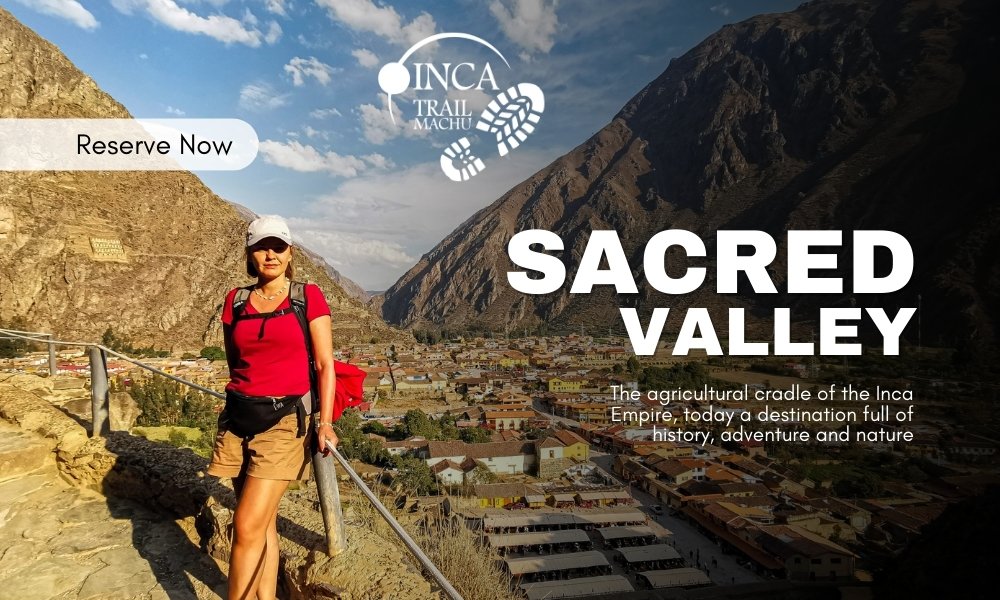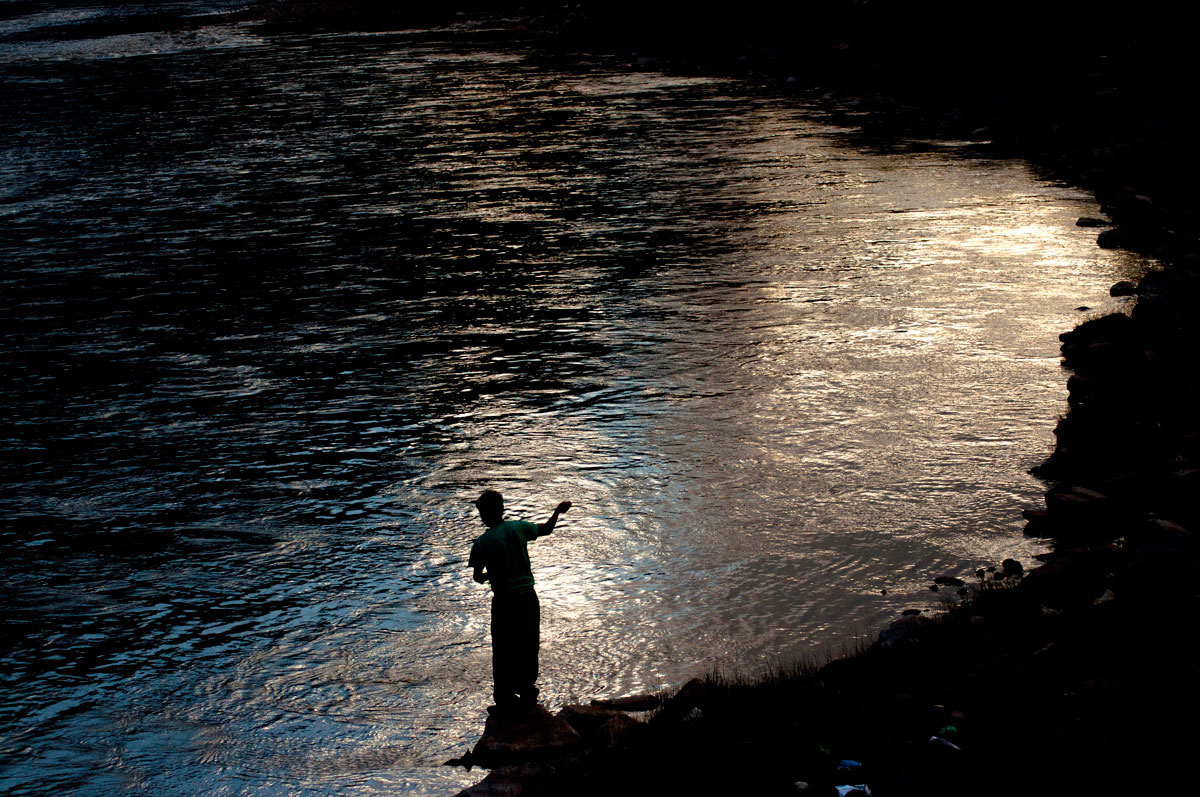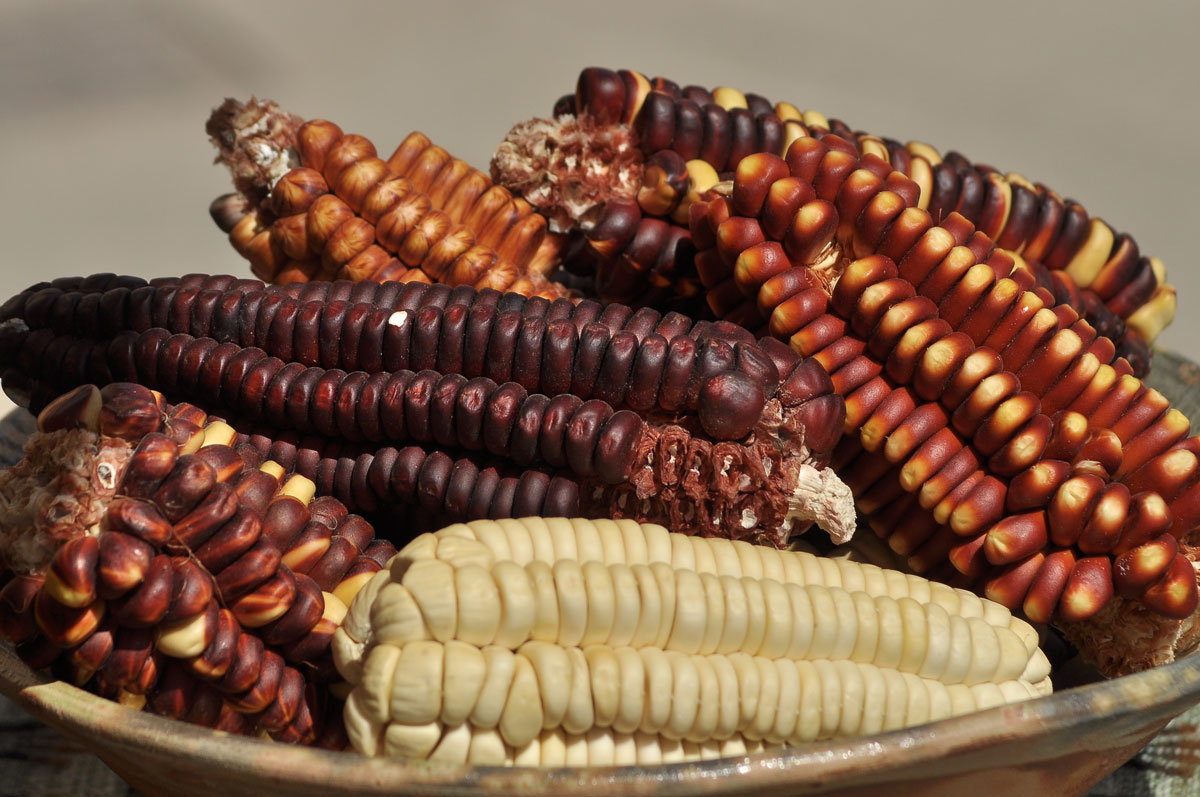
Visiting the city of
Urubamba, in Peru, is entering a place full of history, tradition, and adventure. Located in the heart of the
Sacred Valley of the Incas, within the
Cusco region, this city is known as the "Pearl of the Vilcanota" for the beauty of its landscapes, its mild climate for much of the year, and the warmth of its people.
Those who visit this city can choose adrenaline-filled experiences, like practicing adventure sports in unique natural settings, or simply relaxing in a quiet and welcoming environment. On your tour through this charming Cusco city, you will find a unique mix of tradition, nature, and hospitality. Below, we show you the most recommended places to visit and the activities you can't miss.
Where is Urubamba located?
The beautiful province of Urubamba is located 78 km northeast of Cusco northwest of Cusco and is crossed by the Vilcanota River, but next to the town, the river takes the name of Urubamba. Urubamba Peru is one of the most productive places in the country, the territory produces the best white corn in the world, and in rainy weather, you can find fruits from the valley, try "Pacay", "Nisvero", "Capulí", peaches, quince, and delicious strawberries; in most cases, they come from organic farms.
What does Urubamba mean?
Urubamba means "pampas one day's walk". But the name is far from what it is, given that Urubamba was one of the main areas of agricultural production during the Empire of the Incas.
History of Urubamba
During the time of the Incas Urubamba in Peru was the entrance to the jungle, the Antisuyo, the land of the "Chunchos" (savages). The Urubamba river was called Willka Mayu or Rio del Sol and it was sacred to the Incas; since it gave shape to a valley where some of the most amazing cities and settlements of the Inca empire were found; Machu Picchu, Ollantaytambo, Pisac, Choquequirao, in all of them you can find buildings dedicated to the Sun, the highest deity of it.

What to do in Urubamba?

The Urubamba River
The name of the Urubamba River comes from Quechua Urupampa which means "plateau of spiders". It was known in the time of the Incas as Willkamayu and was sacred to them. It is one of the main Peruvian rivers and is part of the Amazon basin. By tradition, the Urubamba River is divided in two by the Pongo de Mainique, a small canyon that is dangerous to navigate and with a somewhat sinister reputation.
Characteristics of the Urubamba River
The river on the south side of the pongo is known as the "upper Urubamba", it is born at the Vilcanota knot, and was known as Wilcamayu (Sacred River) by the Incas; While the north side of the Pongo de Mainique flows into the Ucayali River and is known as the "Lower Urubamba", touring much of the department of Cusco with the name of the Vilcanota River, but entering the city of Urubamba, receives the name of the Urubamba river. This river runs through the entire Sacred Valley of the Incas, on its way it passes at the foot of the mountain where Machu Picchu is located, but before it passes through Ollantaytambo.
Rio Alto Urubamba
The south side of the river before the pongo de Mainique, receives the name of Alto Urubamba.
- The Urubamba River in the South Valley of Cusco
Your tour of the northeast, in the department of Cusco, takes you through the Archaeological Complex of Raqchi, where the famous Temple of the God Wiracocha (Creator of the universe according to the Incas) is located; It crosses the South Valley through the town of Andahuaylillas, where the so-called Sistine Chapel of Americas is located 36 km from the city of Cusco.
- The Urubamba River in the Sacred Valley of the Incas
After passing through this city, the river continues its journey through the Sacred Valley, where it passes through one of the most beautiful villages in the valley and where you can find amazing Inca ruins; It is about the ancient Inca city and the colonial town of Pisac, from where you could watch the entrance to the Sacred Valley of the Incas and the passage to cities such as Urubamba, from whom it receives the name, Ollantaytambo and Machu Picchu.

- The Urubamba River in Urubamba
Urubamba is the province that produces the largest white corn in the world and where the Vilcanota river changes its name to Urubamba; at the height of this city the river becomes more mighty and turbulent, allowing you to practice level III rafting, along 110 kilometers and with a flow of 600 m3/s, after enriching this land for the production of corn, the The river continues its descent to the town of Ollantaytambo, where you will have to board the train to Machu Picchu, or from the incredible Inca Trail to Machu Picchu begins.
- The Urubamba River in Machu Picchu
The Urubamba River surrounds the mountains where the Inca city of Machu Picchu is built and runs through the valley from the city of Ollantaytambo to the town of Aguas Calientes at the foot of the mountain where Machu Picchu is built; The trains to Machu Picchu travel along the banks of the Urubamba river to the Inca llacta (city). The river surrounds the Huayna Picchu mountain in a circular way, giving rise to an enigmatic and unique landscape, which has inspired thousands of people.

Flora and fauna of the Urubamba River
Today the places where the Urubamba river passes have become one of the best places for bird watching in the Cusco region and in Machu Picchu. There are more than 400 species of birds that inhabit the Machu Picchu National Park. As you move into the valley, the number of plants and animals will increase; several of them are species that you will not be able to see anywhere else in the world. The Historic and Natural Sanctuary of Machu Picchu is home to endangered species, such as the spectacled bear and the cock of the rocks; and countless insects, butterflies, many unique plants, among which you will find around 500 varieties of orchids.
Frequently Asked Questions about Urubamba
When to visit Urubamba?
The dry season, between the months of May and September, is the best time to visit and move around the Andes mountain range. In this period, maximum temperatures are usually around 21 ºC.How to get to Urubamba?
By Plane
The closest and most popular airport is located in the famous Peruvian city of Cusco, 56 kilometers south of Urubamba in Peru. From there it is possible to travel by train or taxi to Urubamba, which will cost you around S/ 150. It is also possible to arrange these trips in collective vehicles (taxis or vans), in which the total price is distributed among the passengers, although it is convenient to agree on the rate in advance.
By Train
There is no direct train to Urubamba, but you can travel from Cusco to Ollantaytambo and, once there, take the bus to Urubamba. Tickets cost 2,300 PEN.
By Car
To travel from Cusco to Urubamba, you just have to take route 3S and you will get there in just over an hour.
By Bus
It is possible to travel by bus from Cusco to Urubamba for 3.50 PEN.
Where to stay in Urubamba?
The Aranwa Valle Sagrado is an 18th century hacienda, with an undeniable charm, offering rooms from 800 S / per night. Tambo del Inka is another luxury complex equipped with a spa, fascinating views and all modern comforts. The average price range that you should take into consideration when staying one night in a double room ranges from 115 S / at the Tun Tun Secret Mountain Houses to 2174 S/ at the Aranwa Sacred Valley Hotel & Wellness.
Interesting neighborhoods in Urubamba
- Ollantaytambo is the destination for many guided tours of the region. In addition to the presence of beautiful enclaves of the Urubamba River, the central train station of the Sacred Valley of the Incas is also located here.
- Pisac is a paradise for handicraft lovers, which includes the ancient temples of the Archaeological Park of Pisac.
Downtown Urubamba is known for its great connections with the Sacred Valley of the Incas region and for its many outdoor sports activities, such as hang gliding, paragliding and rafting.
Where to eat in Urubamba?
Discover one of the most tempting restaurants in Urubamba, surrounded by the natural beauty of the Sacred Valley. All the ingredients of the seasonal Andean dishes are available locally and much of them come from our ecological garden. A short distance from the mighty Urubamba River, the Rio Sagrado restaurant's offerings stimulate all the senses.The Orchard
El Huerto's sophisticated and elegant atmosphere by candlelight makes it one of the best restaurants in Urubamba.
Fresh herbs and spices permeate local specialties and international delicacies in this cuisine that fuses the region's best-kept culinary secrets with innovative touches. The result is an amazing menu.
Open every day from 6:00 a.m. m. at 10:00 p.m. m.The Garden
The Garden makes the most of the beautiful scenery and is an idyllic place to enjoy an intimate lunch in a natural setting.
Select a sun-drenched table or lounge in the shade of leafy leaves. Let the sound of birdsong and the murmur of the Urubamba River provide a musical curtain to enjoy a peaceful feast prepared on site, accompanied by freshly baked breads.The Huerto Bar
Take a seat in a place overlooking the Urubamba River. In this tranquil setting, let our friendly team guide you through El Huerto Bar's tantalizing selection of wines and spirits.
Visit this original wood and stone bar to drink fresh cocktails against the magnificent backdrop of the Sacred Valley. Or head to our lush garden, where top-notch table service and a mix of delicious light Andean bites complement an ingenious drink menu. Try the exclusive Rio Sagrado cocktail, a mix of pisco, mint, apple liqueur and coconut cream.
Open every day from 10:30 a.m. m. at 11:00 p. m.Culinary Traditions: Pachamanca
This traditional cooking method, dating back to the Inca Empire, uses hot stones in a hole to slowly cook marinated meats and vegetables. Savor this authentic dish with a selection of delicious side dishes, drinks and desserts. Available for a minimum of eight people.
Other Experiences Near Cusco
Beyond the majesty of Machu Picchu, the surroundings of Cusco offer a variety of experiences that allow you to connect with the culture, history, and landscapes of the Andean Peru. From traditional towns to little-explored natural wonders, there is much to discover just a few kilometers from the imperial city. Discover the best tours in the Cusco region:
Sacred Valley, Inca Trail, Machu Picchu and more



